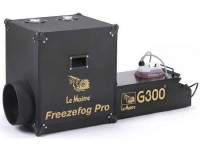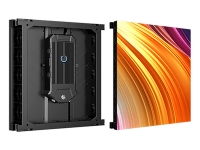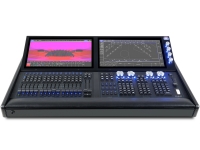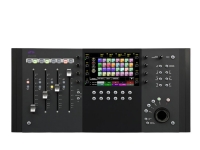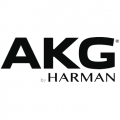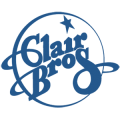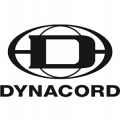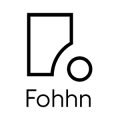ABOUT THE PRODUCT
ABOUT THE MANUFACTURER
GLOSSARY
Professional used lighting equipment.| Professional second hand lighting equipment.| Professional pre owned lighting equipment.
Professional used audio equipment.| Professional second hand audio equipment.| Professional pre owned audio equipment.
Second hand audio gear. | Second hand lighting.
Pro audio equipment, second hand amplifiers, DJ, second hand sound systems, second hand Microphones, second hand Media Players.
Outdoor & Indoor LED screens for sale, LED mobile truck.
Light trussing, Gebrauchte Veranstaltungstechnik, used stage equipment Stage & Theatre lighting products.
Used Fujinon
Fujinon is a brand of optical lenses made by Fuji Photo Film Co., Ltd, now known as Fujifilm. Fujifilm's Fujinon lenses have been used by professional photographers and broadcast stations as well as cinematography.
Fujifilm started manufacture of optical glass in its Odawara Factory in Japan in 1940, which was the start of the Fujinon brand. They were proud of their use of expensive Platinum crucibles to get the purest glass achievable at the time. Fujifilm also pioneered Electron Beam Coating (EBC) which according to Fujifilm, represented a new high in lens precision and performance.
The EBC process was significantly different from other coating processes by the number of coating, the thinness of the coating, and the materials used for coating. Fujifilm claimed they were able to have as much as 14 layers of coating and used materials such as zirconium oxide, and cerium fluoride, which could not be used for coating in the conventional coating process.
The first lens to offer the Electron Beam Coating was the EBC Fujinon 55mm F3.5 Macro in 1972. Light transmission for the coating was said to be 99.8%. EBC later evolved into Super-EBC and HT-EBC (High Transmittance-Electron Beam Coating).
Professional used lighting equipment.| Professional second hand lighting equipment.| Professional pre owned lighting equipment.
Professional used audio equipment.| Professional second hand audio equipment.| Professional pre owned audio equipment.
Second hand audio gear. | Second hand lighting.
Pro audio equipment, second hand amplifiers, DJ, second hand sound systems, second hand Microphones, second hand Media Players.
Outdoor & Indoor LED screens for sale, LED mobile truck.
Light trussing, Gebrauchte Veranstaltungstechnik, used stage equipment Stage & Theatre lighting products.
Negative Gain Screen: Material that reflects less light than a reference material. Often used for DLP and LCD projection systems.
Nonlinear Editing: Digital video systems that allow for clips to be extracted without affecting the master recording.
NTSC: National Television Standards Committee. Government-directed committee that established the U.S. color TV standard in 1953. Also known, sarcastically, as Never Twice the Same Color or Never The Same Color due to the inherent difficulty in achieving proper color calibration.
Outcue/Outq/Out-Point: These words all refer to the final few seconds of audio signifying the conclusion of the production.
Package: A completed and fully edited video piece.
Phase: Time relationship between signals it`s all relative.
PIP: Picture-in-picture.
Pixel: Contraction of picture element. The smallest element of data in a video image.
Plasma: Flat-panel display technology that ignites small pockets of gas to light phosphors.
Progressive Scanning: Each frame of a video image is scanned complete, from top to bottom, not interlaced. For example, 480p means that each image frame is made of 480 horizontal lines drawn vertically. Computer images are all progressively scanned. Requires more bandwidth (twice as much vertical information) and a faster horizontal scan frequency than interlaced images of the same resolution.
Projection System: Display that projects image onto a screen.
Raw Edit/Rough Cut: Video edited together without a voiceover, oncamera announcer or text so that separate narration or audio can be added.
Rear Screen Projection: A process of projection where an image is projected on the back surface of a screen placed between the audience and the projector. This allows for a very clean front-of-the-house look in your meeting room because all production equipment is in the back-of-the-house, behind the screen.
RGB: Red, Green, Blue. Can refer to an unprocessed video signal or the color points of a display device. Together these three colors make up every color seen on a display device.
RPTV: Rear-Projection Television.
Scan Lines: The lines drawn by an electron gun in a CRT system to make up the picture. Drawn horizontally, from left to right, starting at the top left and working to the bottom right.
SDTV: Standard Definition Television. Lower-resolution subset of the ATSC`s DTV system. 480i is typically accepted as an SD signal. Digital broadcasters can offer multiple sub-programs at SDTV quality, as opposed to one or two HD programs. Digital satellite and digital cable often refer to the majority of their programs as SDTV, somewhat erroneously, as neither system has anything to do with DTV, though both, technically, consist of a digital 480i signal.
Sigout: The final words of a segment used to signify the production`s conclusion.
Source: A component from which the system`s signals originate. DVD player, AM/FM tuners, and VCRs are sources: 2 Pull-down Recognition or 3:2 Inverse Telecine: Film is usually recorded at 24 frames per second. NTSC video (North America) is 30 frames (60 fields) per second. In order to get smooth motion, the film frames are broken into video fields in a 3-2-3 sequence. 3 fields for the first film frame, 2 fields for the second film frame, and so on. If a line doubler doesn`t compensate for the extra field during playback on a progressive-scan display, the image will have noticeable motion artifacts. A line doubler with 3:2 pull-down recognition or 3:2 inverse telecine can see this sequence in the signal and correct for it by making sure the last field in the first frame isn`t mixed with the first field of the second frame.
Standup: The portion of video in which the reporter directly speaks into the camera. If a standup concludes a package, it contains a sigout. If other video precedes and follows a standup, the segment is referred to as a bridge.
Uniformity: Even distribution across a given space. In video, uniformity can refer to the distribution of light (hot spotting) or color.
Unity Gain: Output that equals the input. Unity gain screen material reflects as much light as the reference material. Has an even dispersion of light.
UHD:Ultra-high-definition television (also known Ultra HD television,Ultra HD,UHDTV,UHD and Super Hi-Vision) today includes 4K UHD and 8K UHD.
User-Generated Content (UGC): Text, photos, video or audio supplied by the customers of a company.
Video Mapping: A technology to "paint" multiple video sources onto a stage or building where the image can be tightly trimmed around stage or building elements without necessarily needing multiple video projectors. Used to animate a stage set, change the entire mood of an event in real-time and provide an added wow factor.
Voice-over (VO): Verbal audio played over video.
Wall-to-Wall Coverage: A continuous broadcast report of a single story with few to no interruptions, usually reserved for particularly significant stories.
Y/C: Abbreviation for luminance/ chrominance, aka S-video signal. Color and detail signals are kept separate, thus preventing composite video artifacts. Cable uses four-pin connector. Used with S-VHS VCRs, DVD players, Hi-8, and DBS receivers.
Professional used lighting equipment.| Professional second hand lighting equipment.| Professional pre owned lighting equipment.
Professional used audio equipment.| Professional second hand audio equipment.| Professional pre owned audio equipment.
Second hand audio gear. | Second hand lighting.
Pro audio equipment, second hand amplifiers, DJ, second hand sound systems, second hand Microphones, second hand Media Players.
Outdoor & Indoor LED screens for sale, LED mobile truck.
Light trussing, Gebrauchte Veranstaltungstechnik, used stage equipment Stage & Theatre lighting products.

